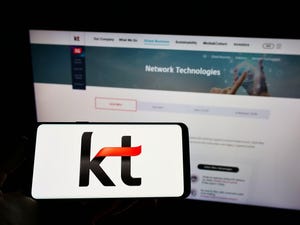
A bipartisan group of US Senators unveiled a $1.2 trillion, eight-year infrastructure bill during a rare Sunday session. The development represents another tentative step forward for legislation that would allocate an astounding $65 billion toward broadband in the US, a historic amount that would have serious implications for the entire industry.
Here are a few takeaways:
1. It's not a done deal
This week the Senate is expected to debate the legislation. It's likely that the details will change, and it's possible that the bill could be further delayed. Nonetheless, the announcement Sunday, the support of some Republicans and the release of the text of the bill all serve to move the legislation forward following President Biden's initial $100 billion broadband proposal earlier this year.
2. It's probably going to be good for the wireless and cable industries
The legislation requires providers to offer download speeds of at least 100 Mbit/s and upload speeds of at least 20 Mbit/s. That's something most advanced wireless and cable networks can handle. It's also a repudiation of calls for "future proofed" networks of 1 Gbit/s.
3. It requires providers to offer a low-cost option
Although some state-level efforts to require low-cost services have failed, the Senate's proposal requires recipients of government money to offer a "low-cost broadband service option." However, it leaves the details of that low-cost option unclear.
4. There are some hints at "digital redlining," but nothing substantial
Public interest groups have routinely warned of "digital redlining," where Internet providers ignore low-income communities in favor of servicing those with rich residents who might spend more money on broadband services. While the legislation does make mention of this practice, it does not "provide explicit prohibitions" against digital redlining, according to the financial analysts at Evercore. They added: "The lack of such a prohibition is a plus for telcos who are doing targeted fiber upgrades of their plants, as a prohibition would make it difficult to economically target those upgrades in high-ROI [return on investment] segments."
5. There's more money for subsidized broadband
In addition to providing money to telecom operators to construct networks in rural areas, the legislation also sets aside billions of dollars to help low-income Americans pay for broadband services. Such an effort essentially represents extra funding for the FCC's Emergency Broadband Benefit (EBB) program. That's important to operators that ultimately stand to gain more customers and more money from such spending. However, "Congress did not create a permanent funding mechanism," according to the financial analysts at New Street Research.
6. Telecom lobbyists mostly got what they wanted
Overall, most financial analysts believe the legislation will be mostly positive for most telecom operators, considering it generally doesn't attempt to set service pricing or provide money for competing offerings. That's noteworthy considering Internet service providers and their trade associations spent more than $234 million on lobbying and federal elections during the most recent Congressional session. According to a new report from the Common Cause public interest group, Comcast was the biggest spender at more than $43 million. AT&T was a close second at $36 million. Trade associations including NCTA and CTIA were also big spenders.
Related posts:
— Mike Dano, Editorial Director, 5G & Mobile Strategies, Light Reading | @mikeddano
About the Author(s)
You May Also Like












